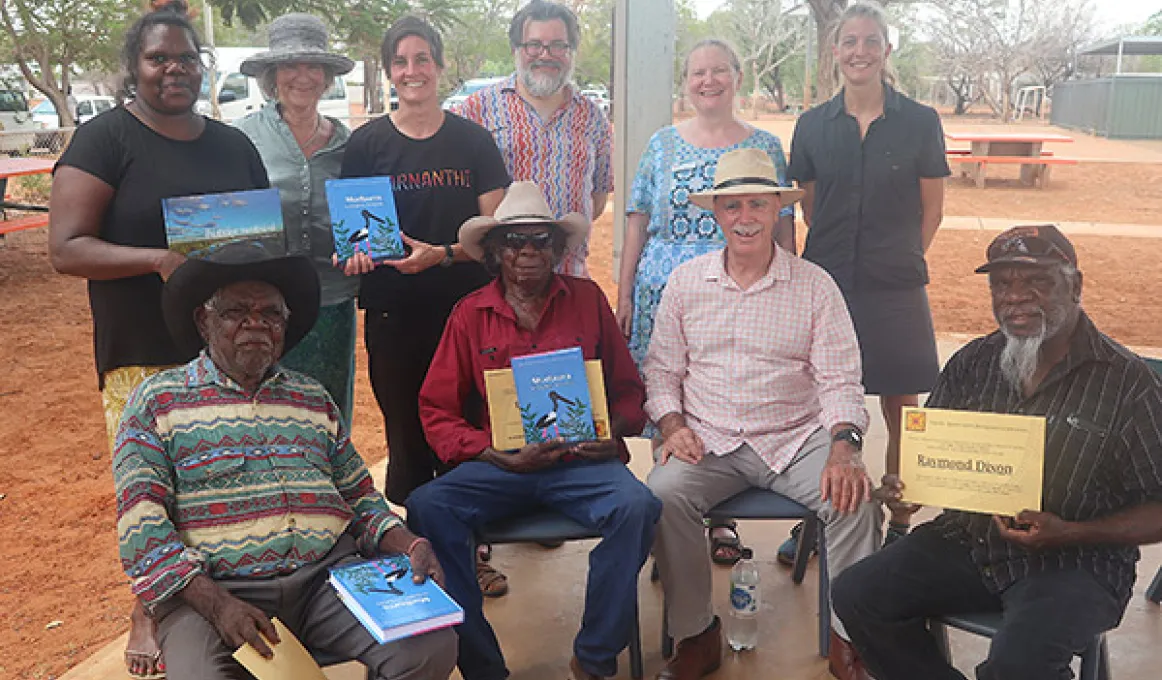Exploring cultural richness: The AIATSIS Dictionaries Project preserves First Nations languages

Across Australia, from Dhurga (south-east coast, NSW) to Warlpiri (Yuendumu, NT) to Gija (East Kimberley), languages are being strengthened by the publication of First Nations dictionaries. The AIATSIS Dictionaries project has seen an explosion of nearly 20 dictionaries published in the last few years.
Across Australia, from Dhurga (south-east coast, NSW) to Warlpiri (Yuendumu, NT) to Gija (East Kimberley), languages are being strengthened by the publication of First Nations dictionaries.
The AIATSIS Dictionaries project has seen an explosion of nearly 20 dictionaries published in the last few years.
Languages contain meanings of family, Law, Country and culture, they maintain connections with ancestors and land. Language is central to identity, and critical to strengthening the cultures and wellbeing of Aboriginal and Torres Strait Islander people.
‘It is very important for our people to have their language and culture because it was taken away,’ said Waine Donovan, one of the compilers of The Dhurga Dictionary and Learner's Grammar.
With languages being a vital conduit to a culture’s history, beliefs and values, the Dictionaries Project is a significant step towards safeguarding these essential aspects of identity.
The project's primary aim is to develop and maintain comprehensive dictionaries for various Indigenous languages, offering both Indigenous and non-Indigenous individuals an opportunity to engage with these rich linguistic traditions.
Elaine Liddy, cultural officer for the Lamalama people, said of the Dictionary of Umpithamu ‘the dictionary is a great way to preserve the Umpithamu language.’
Dictionaries are a major resource for people who want to preserve their languages, they require an enormous amount of work and expertise by language and cultural knowledge holders, linguists and communities to compile over years of patient work.
But the appetite for language will never dampen, with communities around the country highly engaged in reinvigorating their languages and strengthening culture.
Heather Wilson, traditional owner and language teacher at Elliott School said the Mudburra to English Dictionary was ‘a great help for our Language and Culture Program integrated with Science at our school. The students are happy learning about the parts of their body in Mudburra language, English and scientific names and how their body parts work.’
At its core the project functions as a collaborative effort, involving community Elders and members, linguists and scholars who work hand in hand to ensure the accuracy and authenticity of the compiled dictionaries. This approach not only guarantees that the linguistic nuances are preserved but also honours the profound connection between language and culture within each community.
The positive impacts of this endeavour ripple far beyond linguistic preservation. By revitalising Indigenous languages through dictionaries, the Project acts as a bridge between generations, fostering a sense of pride among younger individuals and enabling elders to share their wisdom.
Ngarinyman Elder, Joy Campbell, has been working on the dictionary for five years and said the Ngarinyman to English Dictionary is an important resource to preserve language, culture and traditional knowledge for the younger generations.
‘We need to get our children back to speaking Ngarinyman again so they can know what to say, what to do, in language. Even when they go out hunting, they know what to get,’ Ms Campbell said.
These are sentiments echoed by Mikayla Friday-Shaw, a young Ngarinyman woman who also worked on the publication. She believes it will serve as a major resource for younger generations to learn about and live their culture.
‘The Ngarinyman to English Dictionary is so full of useful information about Yarralin. It is a dictionary but it is much more than that,’ Ms Friday-Shaw said.
Find out more
The Dictionaries Project is funded through the Indigenous Advancement Strategy 1.4 Culture and Capability.